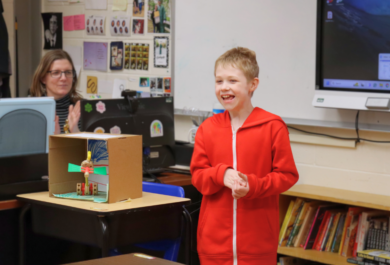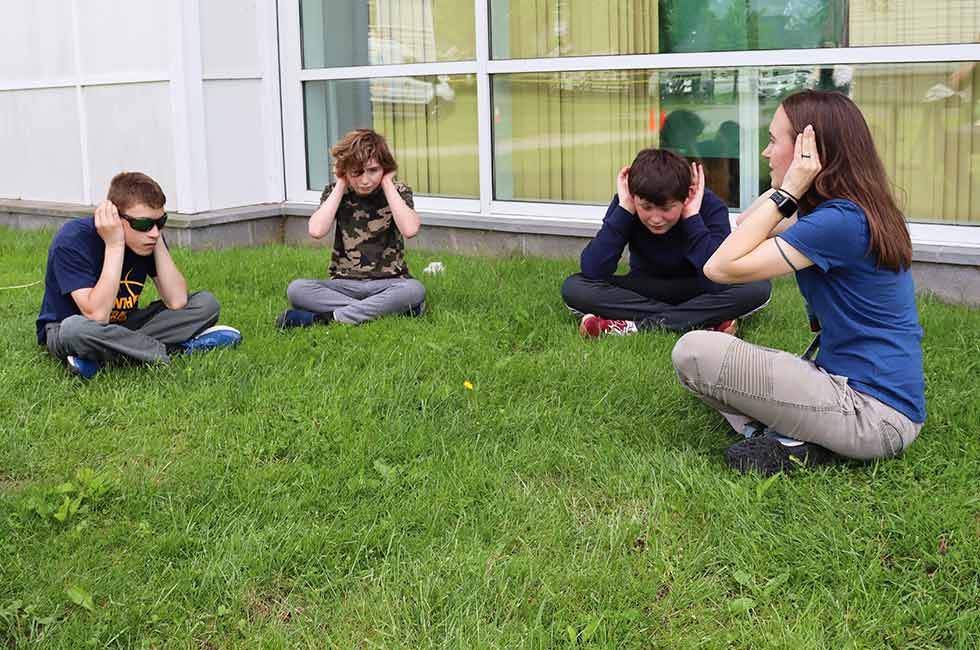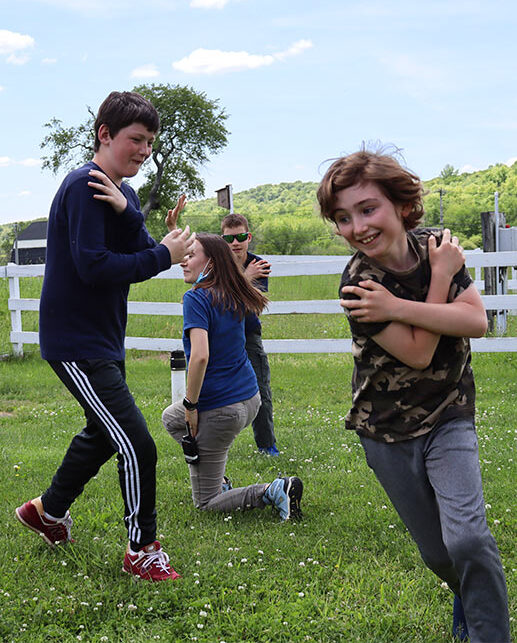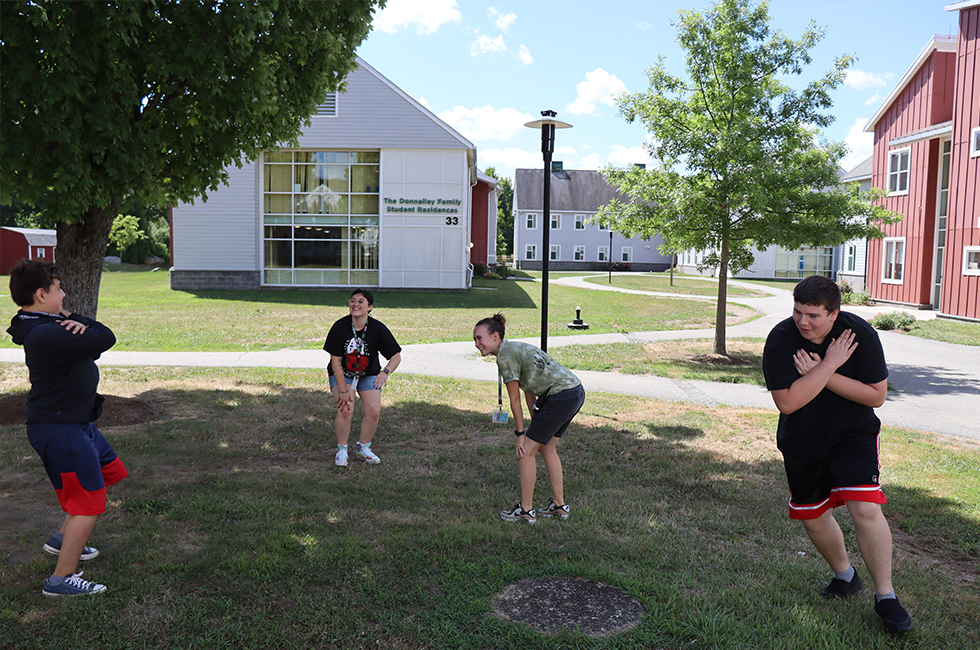Announcements


On a bright, blue-skied afternoon, a group of students sits quietly on a shaded patch of grass. Their hands are cupped to their ears. “These are deer ears,” explained Integrative Support Specialist Lindsay Vallovera, LMSW. Deer rely on their uniquely shaped ears and an impressive ability to hear sounds from great distances. “What happens when we use deer ears,” asked Lindsay. “Things are louder” one student whispered. “I can hear the lawn mower from far away” another added with surprise. “The wind is so loud,” the third concluded. As the conversation continued, the group talked about the benefits of observation skills and how it can feel to simply stop and listen. “How might you use deer ears in everyday life?” “Maybe when I’m upset,” said one student.
Tapping into the senses and practicing mindfulness may not be what you first think of when describing play therapy. Its implications in a therapeutic school and residential treatment setting, however, not only allow for great movement and teambuilding activities. It also encourages Green Chimneys students to become empowered by their senses and observations. As a result, their self-awareness increases. Furthermore, it creates opportunities for students to apply techniques in class, in the dorms, or at home.
For decades research studies have validated an even older practice of play therapy, especially for children with ADHD, anxiety, anger management deficits, or disruptive behaviors. According to research conducted by the UK Society for Play and Creative Arts Therapies, and based on over 120,000 clinical cases, 73 to 84 percent of children who participate in play therapy experience a positive change (more).
As part of the milieu of therapeutic services and programming at Green Chimneys, movement or play sessions are among several themed forms of group therapy. Offered weekly and during the school day, the sessions are voluntary and provide students with constructive respite from the classroom.
 The movement group was specifically created as a way for students to engage in interpersonal play through collaborative games that focus on problem-solving and communication. Participants have the opportunity to move, think and play as they work together to develop creative solutions to team challenges. The core goals of the group are:
The movement group was specifically created as a way for students to engage in interpersonal play through collaborative games that focus on problem-solving and communication. Participants have the opportunity to move, think and play as they work together to develop creative solutions to team challenges. The core goals of the group are:
Back-to-Back Lego Build is one of a variety of games played in session. Students sit in pairs, facing opposite directions, and one peer builds something with Lego and then describes what they built. Next, the other peer attempts to create an identical Lego build with verbal instructions from their partner. This game demonstrates the importance of communication to explain specific needs to achieve understanding. It also requires listening closely for direction or if their partner is struggling. Students learn that they have to describe the details (the color, shape, size, and location of each piece) as well as encourage their partner. The result is a colorful visual of their collaboration and efforts.

“I have experienced this group as a space where students have successfully identified meaningful ways to communicate their needs and expectations of others, as well as a space where students provide feedback to each other that is both positive and constructive,” explains Lindsay. “Students practice identifying ways in which these transferable skills can be used in other environments—school, dorm, home.”
Creative and customized clinical services are a part of what makes the Green Chimneys School experience so special. On a patch of grass in the shade, in a barn, on the sports field, or in the garden, children are building self-awareness and developing skills with the support of experts. As the new quarter begins and new group therapy sessions roll out, we look forward to sharing additional ways that students are learning and growing.
Access our clinical resources (including videos) to help navigate at home

Crowned the best for falconry in medieval times, gyrfalcons were once reserved for kings. As the largest falcon in the world, with exquisite plumage ranging from bright white to deep charcoal, gyrs are revered for their powerful skill of flight. Their long wings make hunting waterfowl from 3,000-feet-high a feasible and fantastical feat. This falcon was flown in the sport of falconry for several years.